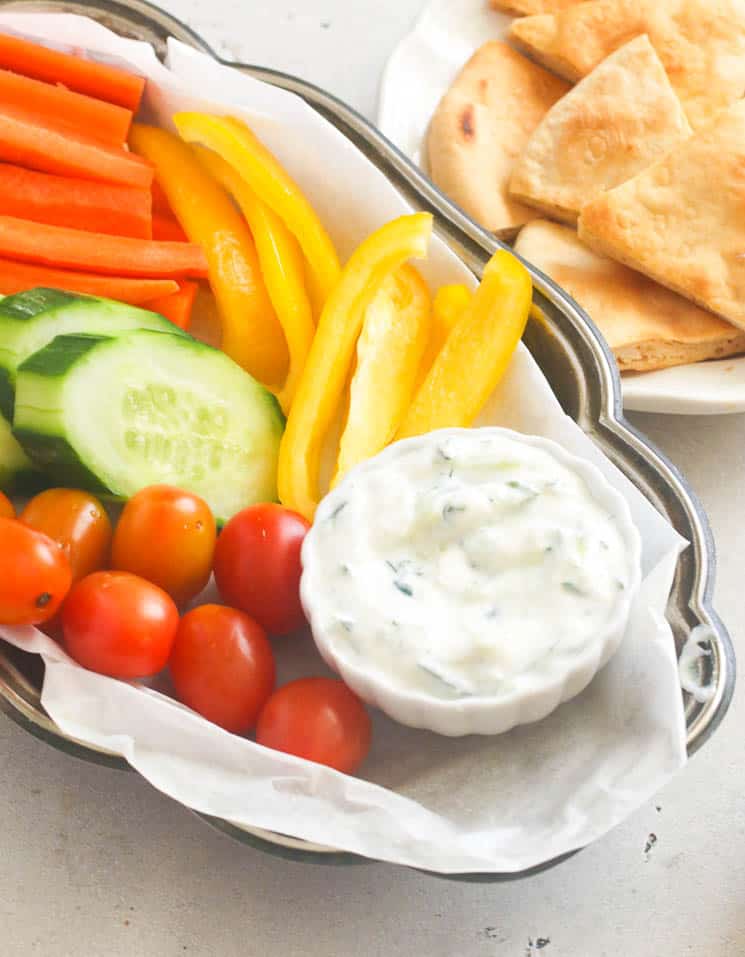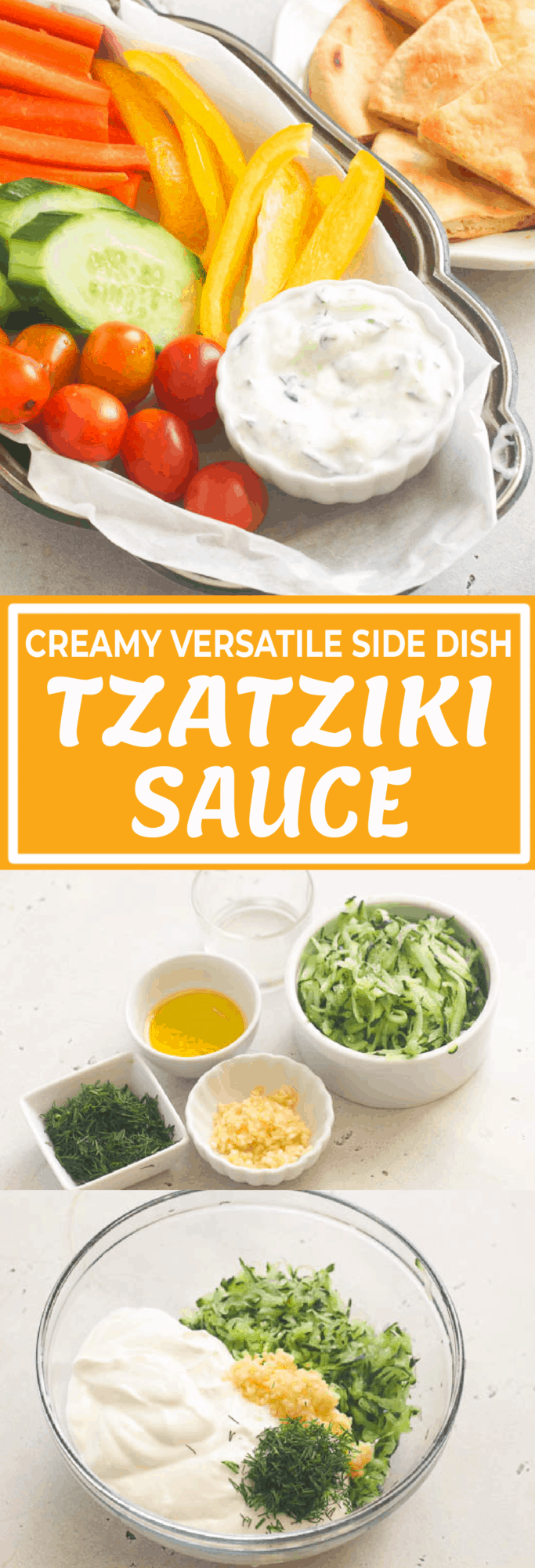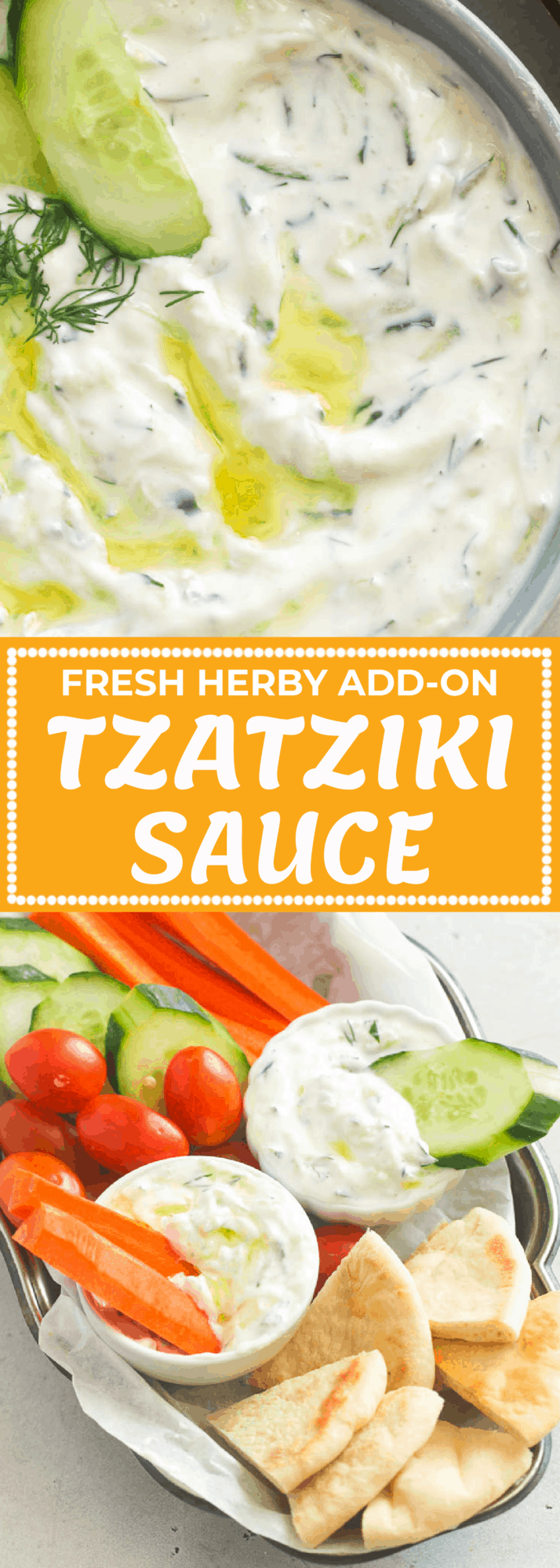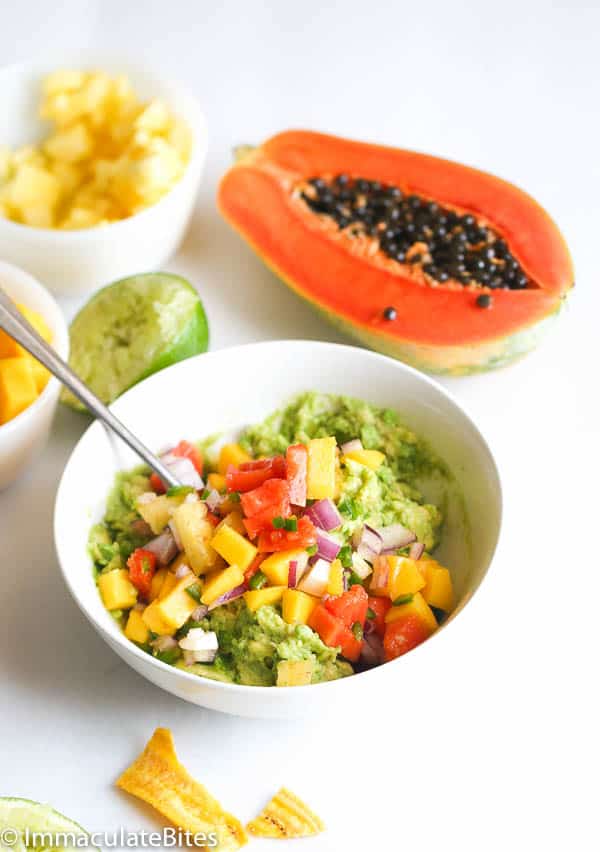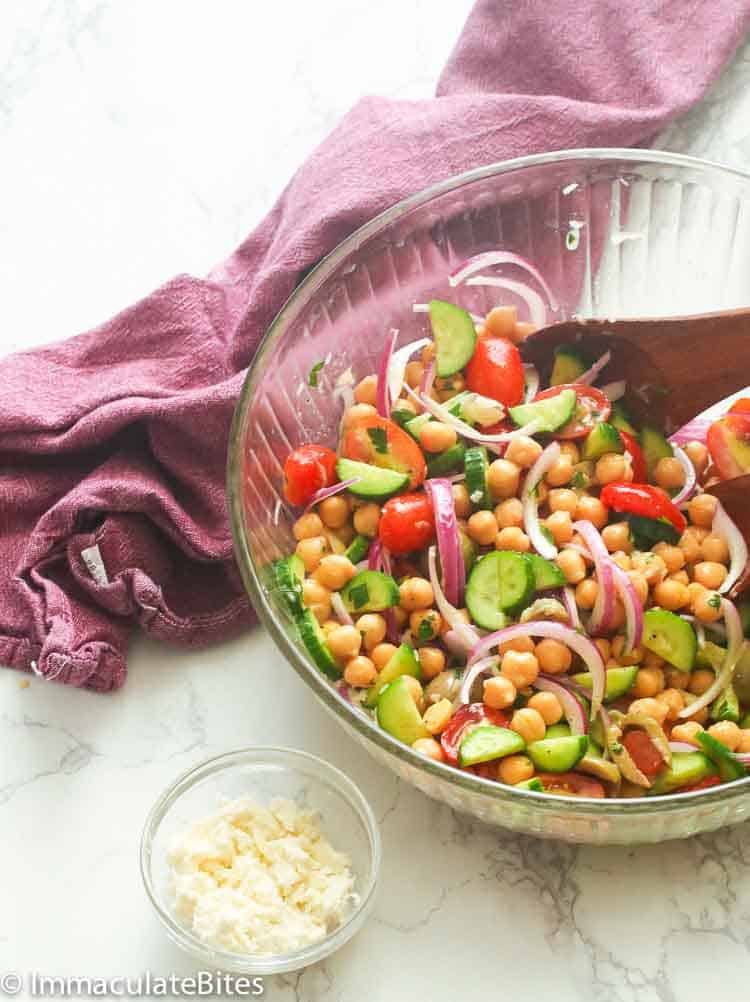Tzatziki Sauce
Tzatziki Sauce – creamy-white with a kick of light, tangy, and herby flavors. This dip can be easily made in your own kitchen. From veggies to meats and even on wraps, I’m sure your friends and family will crave more of this. It’s affordable yet taste as good or even better than the bottled ones.
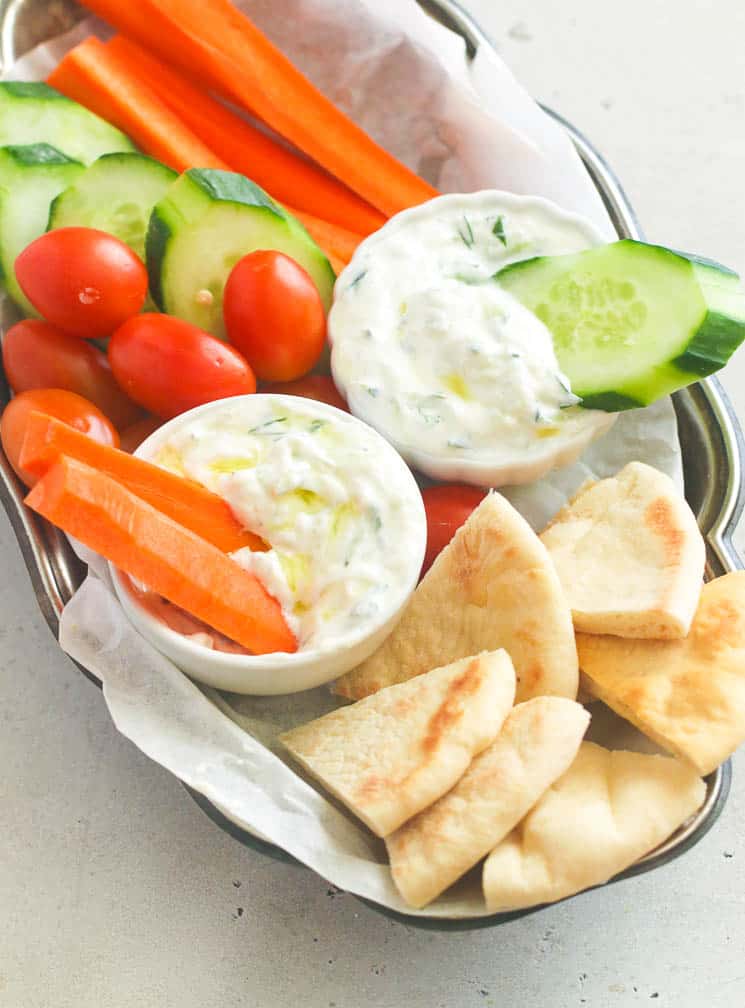
As a health enthusiast and a home cook myself, finding the right sauce for any meal can be a bit of a dilemma, but that doesn’t mean I have to settle for anything less delicious or less healthy. Nowadays, almost everything can be bottled and sold, and Tzatziki is no exception.
It may be alluring to buy conveniently but hold your purses for one bit!
Authentic homemade Tzatziki Sauce tastes a lot better without the preservatives and other unnecessary ingredients and its way more affordable! So skip the industrialized bottles and save a few bucks while you’re at it.
What is Tzatziki Sauce?

You might not be familiar with its name but if you’ve enjoyed Mediterranean and Middle Eastern dishes, you’ve probably experienced the flavors of this sauce. It’s the white creamy sauce usually served in a small dipping plate in restaurants or in easy-squeeze bottles in some food stands. So, what is Tzatziki sauce?
Tzatziki is a versatile side dish that can be served as a soup, dip, and popularly as a sauce. Talk about versatility!
It is made from strained yogurt, cucumbers, garlic, olive oil, salt, and acid. Variations of this recipe include parsley, mint, thyme, and your choice of acid (usually vinegar or lemon juice.) more on this later.
Sauce Ingredients
Authentic tzatziki is, of course, made with fresh ingredients. If you’re just starting out your kitchen journey and you’re not familiar with this sauce, you might think that these items won’t be a good mix but let me stop you right there. I’m going to tell you why these ingredients blend harmoniously to give you a perfect Mediterranean sauce.
Cucumber – Can you find anything fresher? With its watery composition, this gives off a touch of freshness that balances out the overpowering flavors of the other ingredients. This is why the sauce, as a whole, is light to the palate.
Greek Yogurt – This is the base for the sauce itself. Generally, this thick and creamy ingredient has a sour flavor with a little creamy under taste. So why does it blend well? Well, its cohesiveness binds all the flavors together so that you have one complete taste profile.
Garlic – This veggie is more often used as a spice than a vegetable. For this tzatziki recipe, it is used just like that. Fresh garlic will have a mildly spicy taste that gives off an aromatic presence. You can actually identify the ingredient more with its smell than the flavor.
Olive Oil – This ingredient makes the entire sauce Mediterranean. It pairs up with garlic to enhance its flavor to get that iconic taste from both ingredients. And this liquid makes the consistency of the tzatziki super smooth.
Dill – You might’ve heard less of this herb, but it has a close taste to that of celery and fennel and bares a similar strength to anise. Mixing this ingredient in our tzatziki recipe gives another layer of freshness and flavor.
Lemon juice – The citrusy acidity of this ingredient helps in extracting the other flavors which it then complements. It blends perfectly with the sourness of the yogurt to achieve two layers of tanginess.
In short, tzatziki sauce is a fresh creamy mixture of aromatic and flavorful herbs that will surely please even the most discerning palates.
Recipe Variations
Because this sauce originated within the wide borders of the Ottoman Empire, variations of the Tzatziki sauce recipe come from different countries and regions.
In some regions of Greece, they use cilantro and ground coriander to give it a bit more flavor instead of dill, parsley, and mint. This Greek sauce version is the one we are more familiar with today.
As the center of the Ottoman Empire, Turkey has a lot of variations for the recipe. The Turks have a more traditional way of preparing this side dish by crushing spices using a mortar and pestle. Personally, I think this technique requires more effort but is really worth it in terms of flavor. The spices used for this recipe include paprika, Aleppo peppers, and sumac.
Other versions of the Tzatziki sauce from the same region use chopped scallions, shredded radish, chopped red pepper, and basil, yes fresh basil!
In the Middle East, their version of the Tzatziki is accompanied by alcohol. Now that sounds fun! But in some parts of the same region, instead of cucumbers, they replace the cucumbers with a variety of fresh herbs such as basil, leek, and raisins. Sounds interesting right?
How To Use Tzatziki
I’ve said it before and I’ll say it again, This Tzatziki sauce recipe is very versatile. Aside from its different variations. It also has a lot of different applications, too. You can serve it any time of the year and it would still fit for the occasion.
Soup
As a soup, it is served chilled topped with the herbs you’ll use. The base of the soup is a mixture of cucumber and yogurt. A mix of herbs and spices is added depending on the flavor you want and is chilled for about 2 hours before serving.
Dip
Tzatziki Sauce is a ridiculously healthy dip for your chips, crackers, or these homemade tortillas. It’s rich, thick, and creamy texture can be used as a dip. To achieve the right consistency for this, you may want to drain the cucumber water out before mixing it with the yogurt.
Why you ask? Well, since cucumber is around 90% water, the liquid from the veggie might over dilute the mixture giving you a watery consistency which is not ideal for dipping.
Veggies are also great with tzatziki sauce. From steamed broccoli, cauliflower, and carrots, to roasted bell peppers, zucchini, eggplant, and asparagus, the taste will surely blend harmoniously.
Pita Bread – if you want to purely taste your homemade tzatziki sauce, you better have some pita with you. You can also make your own with our homemade pita bread recipe HERE.
Sauce
Gyros – a meaty Greek dish cooked in a very special way all wrapped up in a pita, it’s usually made from pork or chicken, the sauce goes well with it because of the natural oils of the meats that blend well with the yogurt. The cucumbers add a refreshing aftertaste as well. You can view our Chicken Gyros Recipe so you can pair your homemade Tzatziki sauce with it.
Shawarma – if gyros are made from pork or chicken, shawarma is often from Lamb or beef meat. In some parts of the world, this is a well-known iconic combination.
Kebabs– did I mention that it goes great with grilled veggies? Well then, Kebabs are grilled meat, and I mean meat of all kinds. Chicken, shrimp, beef, pork, grilled with delicious caramelized to charred veggies. The sauce actually balances out the charred flavor of the meat and the burnt parts of your veggies so that it can be more enjoyable to eat. Check out our Shish Kabob HERE.
Spread
Make your morning toast extra special by spreading a nice layer of tzatziki on top of it.
How Long Does Tzatziki Last in the Fridge?
Like other sauces we’ve enjoyed before, this too can be stored. Because this Tzatziki sauce recipe is made with fresh ingredients, it is best served as soon as you make it. But if you made your sauce ahead of time you may want to place it in an airtight container and refrigerate.
The mixture will last for about 3 – 4 days. You might see a bit of liquid separating from the Tzatziki every time you plan to use it but don’t worry, it’s just the lemon juice and whey separated from the whole mixture. Easily mix the sauce again and you’ll restore it good as new.
More Greek Recipes to Explore
Love this? Take your tastebuds to the beautiful island of Greece with these scrumptious and easy Greek recipes below.
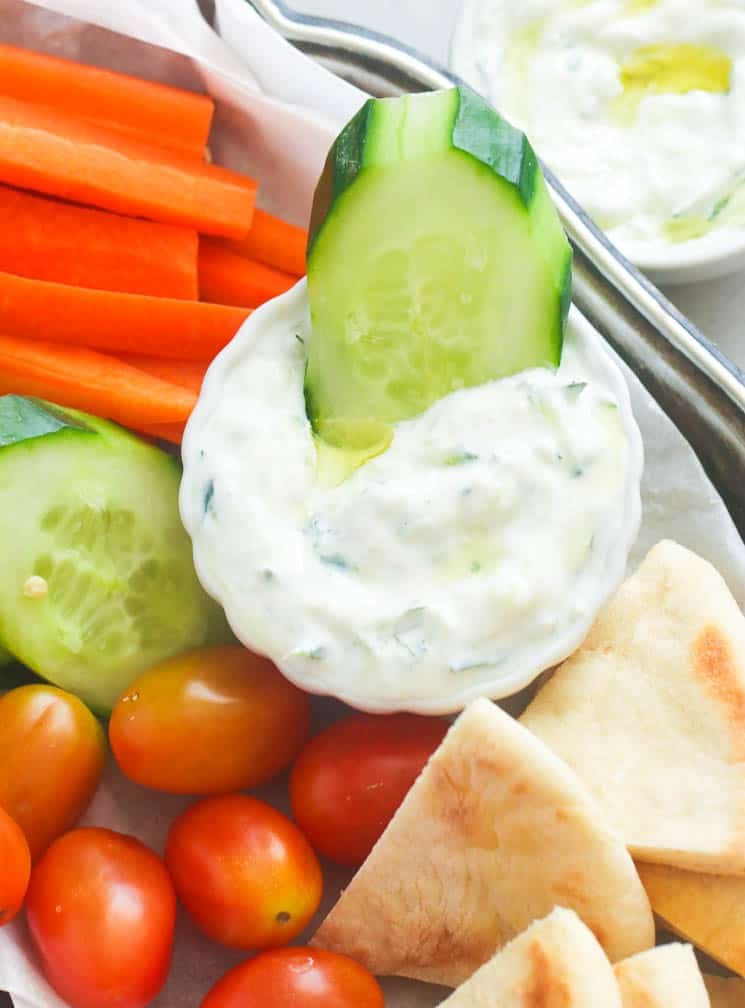
How To Make Tzatziki Sauce
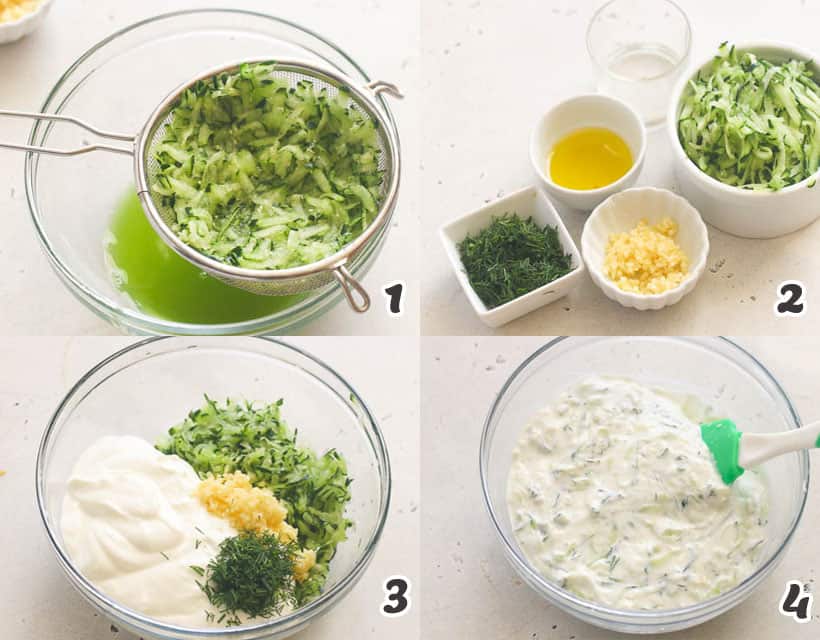
Place grated cucumber in a fine sieve and drain and squeeze out as much liquid from the cucumber as possible. Alternatively, you can drain out the liquid using a cheesecloth. Add squeezed cucumber to a medium mixing bowl. Discard liquid. Place the rest of the ingredients in the bowl – yogurt, garlic, olive oil, vinegar or lemon juice, dill, salt, and pepper. Mix to fully combine. Adjust seasonings to taste. Cover tightly and refrigerate for at least 1 hour. Serve with warm pita bread and/or vegetables. Leftover tzatziki keeps well, chilled, for about 4 days.
